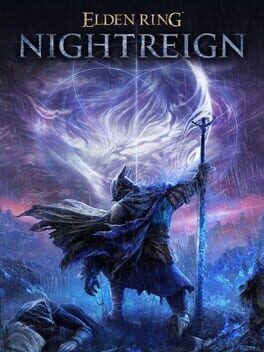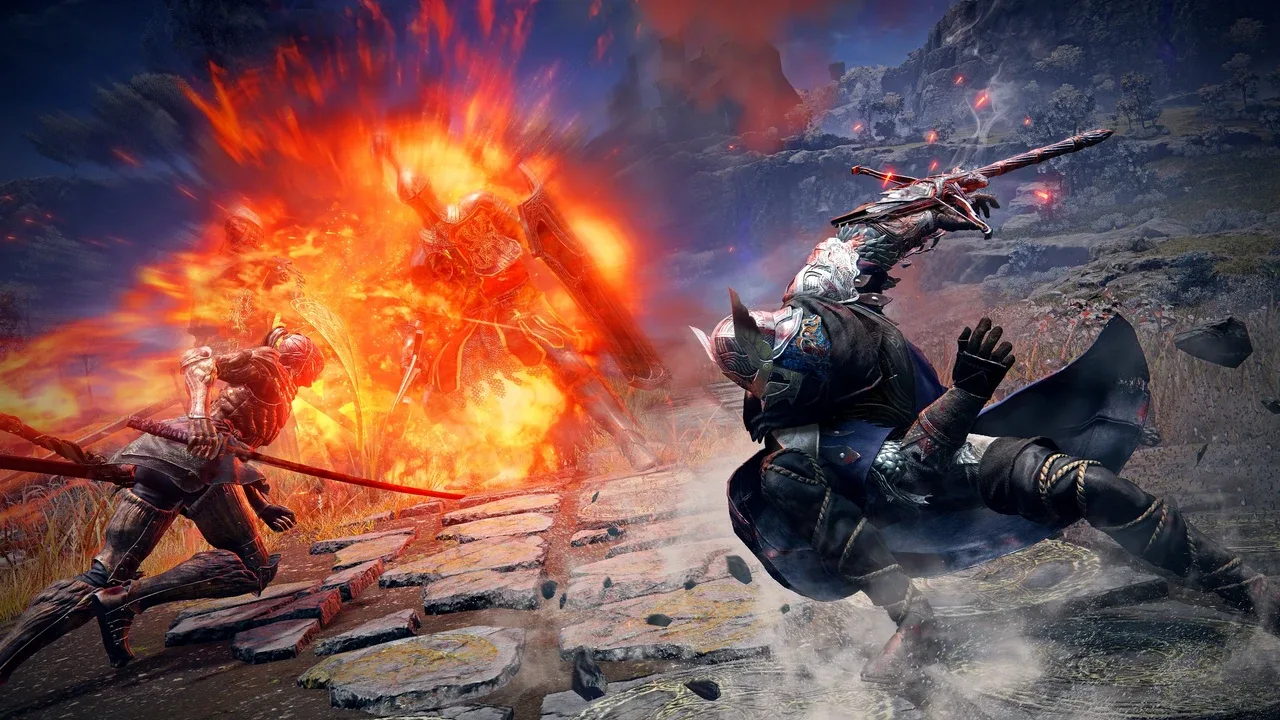

I've played a lot of Nightreign. I'm still playing a lot of Nightreign. In the month and a half it's been out, it quickly became a member of the hundo club, it got me fully back into wiki editing and data mining, and even after beating every nightlord numerous times and completing every character quest I'll still cheerfully hop into a run any time anyone asks. The only reason I'm marking this "completed" now is because I want to get this review out of my head and onto the web.
If you'll permit a digression, I deeply admire Elden Ring's parsimony. It's a huge game made be a relatively small company who had largely made relatively small games up to that point, and it accomplishes that with an economy of design I consider admirable. I know people complain about the re-used bosses, but there are actually very few of the 165 that are true duplicates of one another. Instead, they add little variations here and there, pair them with other bosses for duo encounters, or ramp up the complexity of their abilities over the course of the game. The small dungeons are the same way: they take a limited set of shared components, then mix and match them in different novel ways. These raw materials are a palette of paints that they re-use and recombine over and over to paint the entire game.
Most large games work this way to some extent, but in Elden Ring the quality of the design at each point really shines through in large part because it draws attention to the patterns and repetitions. You know a catacomb is going to have imps or skeletons and some sort of clever trick, you know a watchdog is going to do some kind of elemental damage, you know a hero's grave is going to make you want to claw out your eyes. But you don't know exactly how—it sets up just enough expectations for it to be able to play with them and continue to surprise you throughout its massive length.
If Elden Ring is a painting and its palette, Nightreign is another artist picking up the same palette and painting something entirely different. It stands as much in the tradition of unofficial mods as it does the tradition of classic soulslikes—it's related to Elden Ring in more or less the same way Defense of the Ancients is related to Warcraft III. The nouns and verbs are largely the same, but the context in which they exist is completely different and utterly surprising. After spending more than a decade as industry trendsetters, carving out a new genre and driving other studios insane trying to match their success in it despite going against all conventional wisdom, From Software has now put out a game that is itself reacting to trends in the industry. Not only that, it's integrating two trends—battle royales and roguelikes—whose peak has largely come and gone.
What's truly astounding is how well it works. I had expected a game where you famously die to bosses over and over before you begin to get comfortable with them to fit poorly into a run-based mold, but the ability to be resurrected by allies or even wipe in some circumstances without losing your run makes even difficult bosses doable. The difficulty curve is spot-on, with each nightlord taking just enough runs to feel like the victory is an achievement without being a slog, given that they have a 35-minute runback. The character classes are interesting and varied, and although I have some design quibbles (Executor and Guardian both suffer from the core issue that waiting for an enemy to hit you is a huge opportunity cost when every second counts) I enjoy playing as almost all of them.
The routing shines brightest of all, though. This was always going to be a result of combining roguelike randomness with battle royale spacing considerations, but even after spending so many hours in the game each run still feels unique and compelling largely on the strength of how interesting it is to plot a course through the world. There's so much that's meaningful to react to—Can we take the nearby field boss at our current level? How many stonesword keys do we have? Which locations give us type advantages? When are we leveled enough to do the castle? Does anyone need a smithing stone? How valuable are towers for our team comp?—and all of it is complicated multiplicatively by the circle locations and the time anything takes.
(I will take a moment here to say: I have almost exclusively played this game multiplayer, on a voice call with friends. I'm sure the experience is deeply different if you're playing with two strangers and can't communicate outside of map markers and time-consuming gestures. I've also played a number of solo runs, but I expect my enjoyment of those is also influenced by reaping the benefits of my routing strategy brain trust. Reading through some of the popular negative reviews on here, that's my best guess as to why I'm so much more taken with this game than they are. I recommend playing with friends, and if we're friends, let me know and I'll hook you up with my squad.)
Coming on the heels of Elden Ring and its game-sized DLC, Nightreign is shockingly small. Even given its foundation of asset reuse, it uses only perhaps a third of the base game's bosses and leaves out most of its environments. It smells like a skunkworks project: something created by a small team on the cheap, possibly born out of a single creator's idea, let out into the world to see what the reception would be. We know that DLC is coming; whether it will evolve into something more live-service flavored remains to be seen, and presumably depends to a large degree on us.
For my part, I'm thrilled to see something like this exist. It's small, it's inexpensive, it's weird, and for all that the elevator pitch sounds like chasing trends the result is something that (like every game this studio releases) is wholly and unapologetically its own thing. I want more of that. I'd want more of that even if it didn't unexpectedly charm me. From Software resolutely forged their own strange path long before they hit it big, and with every new game they release I brace myself for the possibility that they've finally attained enough success that they no longer feel they can afford to be so idiosyncratic. But so far, the blow has not come, and for that I'm thankful.